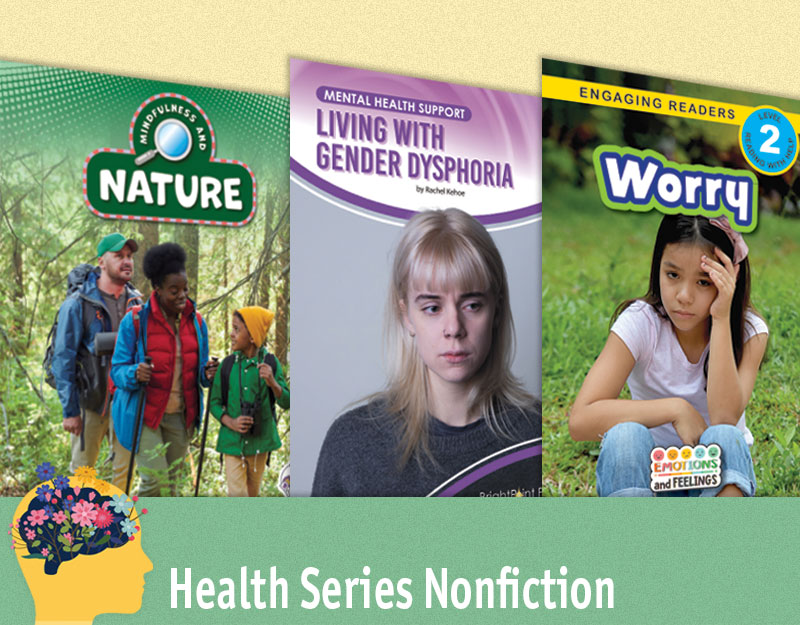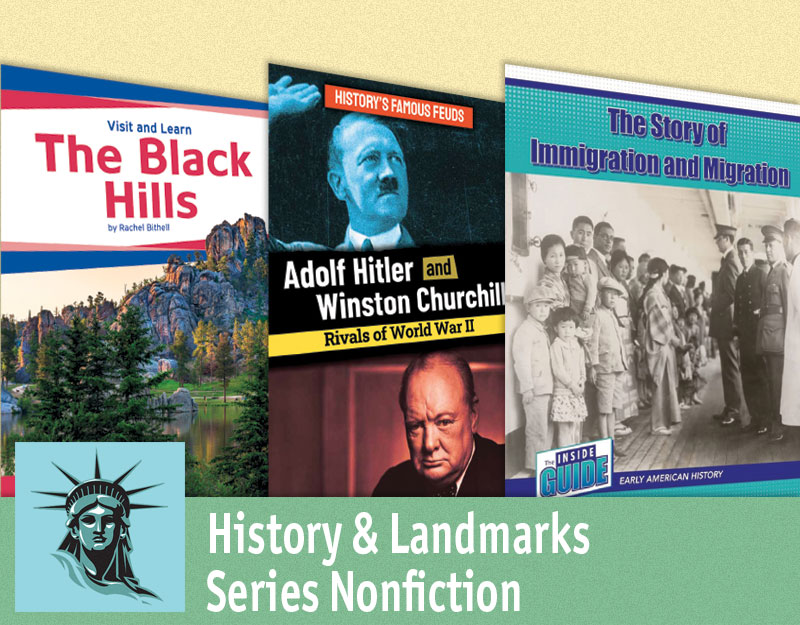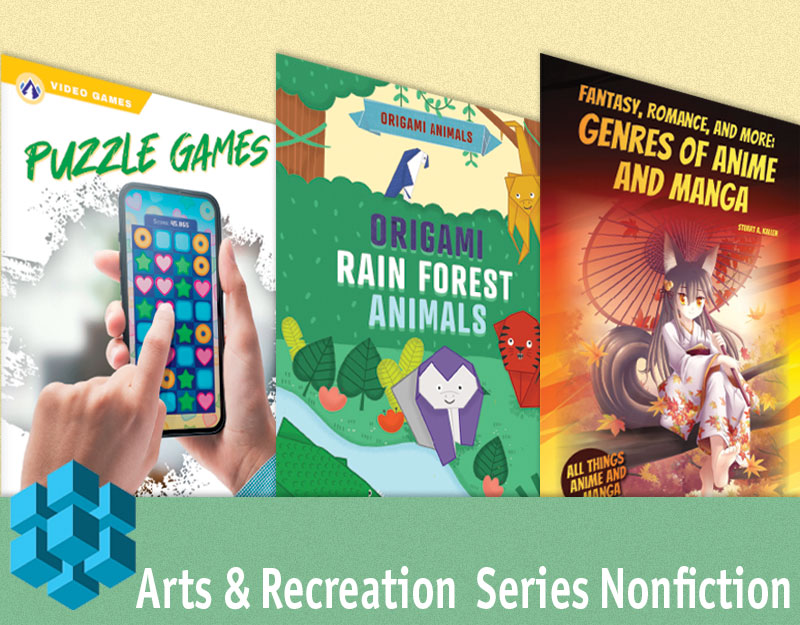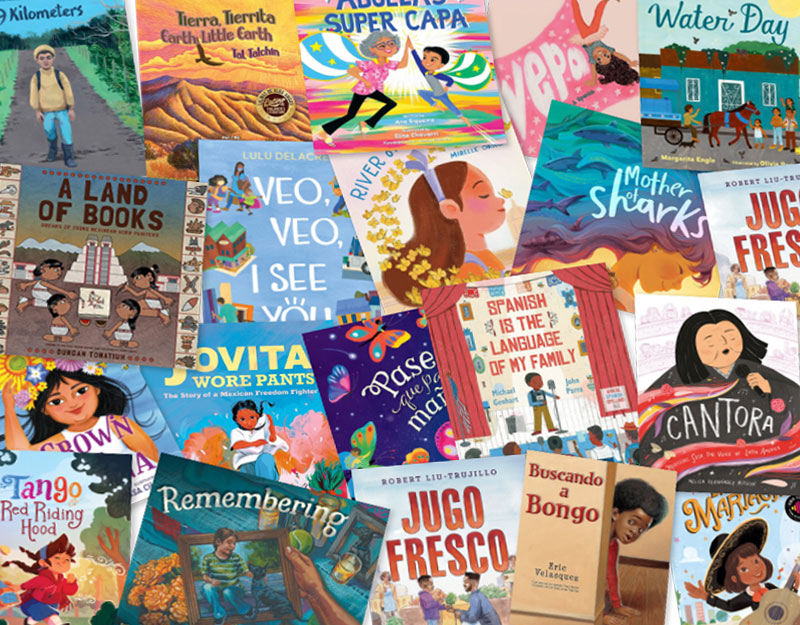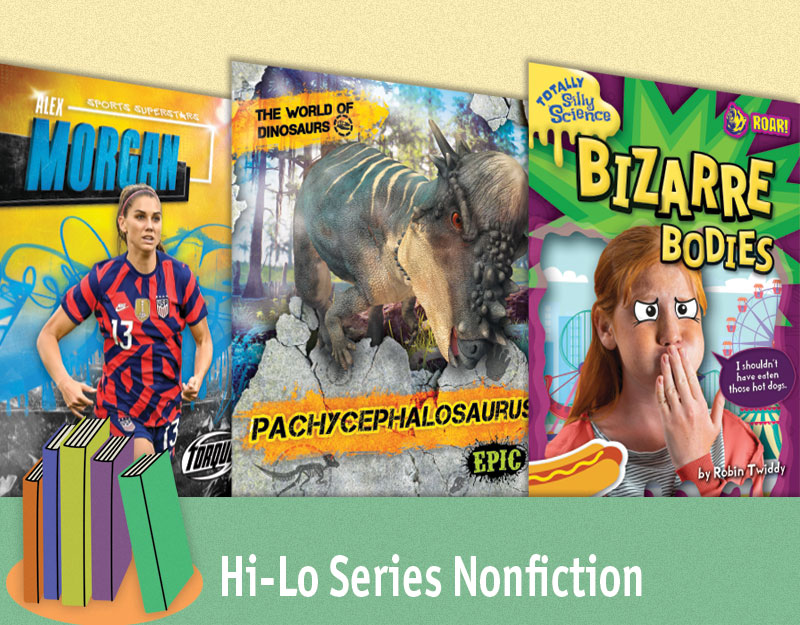Firefly July and Hi, Koo!: Poems about Seasons
Firefly July: A Year of Very Short Poems
Published by Candlewick Press, 2014
ISBN #978-0763648428
Published by Scholastic Press, 2014
ISBN #978-0545166683
Grades K and up
- Shared Reading. Keep these volumes close at hand to read the poems in them aloud throughout the school year. Select children’s favorites to rewrite on sentence strips to post in a pocket chart. Keep the lines of the poem whole on the sentence strips or cut them into individual word cards so that students can reassemble the poem from memory using letter/sound or sight word cues.
- Sensing the Seasons. As the seasons change, so do the things we see, smell, hear, feel, and taste around us. Have students create a comparison chart that tracks the different sights, scents, sounds, textures, and flavors specific to each season. Encourage them to be as precise as possible with their words, and then invite them to use the chart to write more vivid imagery and figurative language in their poetry.
- Focused Poetry Collections. Both Firefly July and Hi, Koo! are collections of poetry that are linked by a single topic: the seasons. Divide your class into small groups that will each select a topic for a poetry collection–either a homemade bound anthology or a bulletin board display. Once the groups have chosen a topic, have them read a wide variety of poetry to find poems that address their topic, and make editorial decisions about which poems to include and how to organize them in the collection. Share their focused poetry collections in the school or at a local library.
- Short Poetic Forms and Poems in Our Pockets. The blurb on the front jacket flap of Firefly July states, “It takes only a few words, if they’re the right words, to create a strong image.” Challenge your students to create short poems (five lines or less) that convey strong images. Use the poems in either of these books as models. You might also want to teach them specific short forms of poetry: epigrams, cinquains, couplets, haiku, and limericks. To further celebrate the strength of these concise poems, have each student pick a favorite short poem to carry around in his or her pocket throughout the week and share with friends and family.
- Illustrating Poetry. Multiple award-winning illustrator Melissa Sweet accomplished the impressive feat of creating a unique illustration for each of the poems in Firefly July. Have your class study the illustrations, using a reference like Molly Bang’s Picture This to understand how line, color, composition, and other artistic principles enhance the meaning of a written text. Then have each of your students gather a few of their favorite poems and apply those principles to illustrate the poems. Have each student create an anthology of their illustrated poems, or create a class anthology or bulletin board that showcases the variety of selected poems and illustrations.
- Poet and Illustrator Study. Jon J. Muth’s poetry and watercolor illustrations work together to create an effective impact on readers. Invite your class to conduct an author/illustrator study of Muth’s work, paying attention to the ways his watercolor technique enhances what the text says, and vice versa. What themes can be drawn across his writing, or across his illustrations? How does watercolor specifically impact the reader’s understanding of the poem or shape the experience? How does Muth’s poetry compare and contrast with other poets?
- Using Questions to Sketch the World Jon J. Muth states on his website that his stories evolve from questions: “Why is this so?”… “If this, then why not that?”… and of course, “What if…?” Sometimes words come first and sometimes an image will prod a story out into the open. I might see a girl opening a door in my mind’s eye but I can’t see what she is looking at. When I consider these questions with careful attention — without expectations — they tend to open my eyes to the world in new ways.” Arm your students with clipboards, paper, and colored pencils, markers, or crayons–as well as Muth’s questions–and head out into the world. Have them sketch any scene or setting that they see before them and then scribble some notes that might help them answer Muth’s questions. Once back in the classroom, have students write out the answers to those questions and begin to shape stories and poems out of them.
- Reading Buddies and Poetry Month. Have your older elementary students read aloud some of the poems in these poetry collections with their primary grade reading buddies. Have them take notes on their reading buddies’ reactions to the poems, and then compare and contrast with one another. What do their reading buddies think of the poems and illustrations in Firefly July? What is the panda bear Koo’s appeal with younger audiences? As a component of this exercise, you might want to have the older students work with their reading buddies in jointly authoring and illustrating short poems.
Critical Literacy
- Beyond the Four Seasons. These collections of poetry celebrate spring, summer, autumn, and winter–seasons that are experienced by those living in more temperate climates. However, many of the world’s people live in places that experience vastly different climates, such as the rainy and dry season in tropical locations. Some even prepare each year for a hurricane season or another season marked by dangerous weather patterns. What might poetry anthologies that explore those seasons look like? How might one possibly “celebrate” the dangers of a monsoon season? Have your class either search for poems about seasons other than the temperate four, or research the experiences of people during those seasons and write poems about them.
http://www.paulbjaneczko.com
http://melissasweet.net
http://www.jonjmuth.com/muth.html
Poetry Foundation – Children’s poetry
http://www.poetryfoundation.org/children/
ADVERTISEMENT
ADVERTISEMENT
Academy of American Poets
http://www.poets.org
The Poetry Archive
http://www.poetryarchive.org
The Children’s Poetry Archive
http://www.poetryarchive.org/childrensarchive/home.do
Haiku Society:
http://www.haikusociety.com/learn/historyofhaiku
Writing with Writers – Poetry
http://teacher.scholastic.com/writewit/poetry/index.htm
Books
Poetry Books about Seasons
Davies, N. (2012). Outside your window: A first book of nature. Ill. by M. Hearld. Somerville, MA: Candlewick Press. see our entry at http://classroombookshelf.blogspot.com/2012/04/outside-your-window-first-book-of.html
Florian, D. (2006). Handsprings: Poems & paintings. New York: Greenwillow.
Florian, D. (2002). Autumblings: Poems & paintings. New York: Greenwillow.
Florian, D. (2001). Summersaults: Poems & paintings. New York: Greenwillow.
Florian, D. (1999). Winter eyes: Poems & Paintings. New York: Greenwillow.
Hopkins, L.B. (2010). Sharing the seasons: A book of poems. Ill by D. Diaz. New York: Margaret K. McElderry Books.
Katz, B. (2006). Once around the sun. Ill. by L. Pham. New York: Harcourt.
Ruddell, D. (2009). A whiff of pine, a hint of skunk: A forest full of poems. Ill by J. Rankin. New York: Margaret K. McElderry Books.
Poetry Books about Haiku
Bodden, V. (2010). Haiku. Mankato, MN: Creative Education.
Cleary, B. P. (2014). If it rains pancakes: Haiku and lantern poems. Minneapolis, MN: Millbrook.
Clements, A. (2007). Dogku. Ill. by T. Bowers. New York: Simon & Schuster.
Mannis, C.D. (2002) One leaf rides the wind: Counting in a Japanese garden. Ill. by S.K. Hartung. New York: Puffin Books.
Raczka, B. (2011). Guyku: A year of haiku for boys. Ill. by P. H. Reynolds. New York: Houghton Mifflin. see our entry at http://classroombookshelf.blogspot.com/2011/01/guyku-year-of-haiku-for-boys-written-by.html
Filed under: Picture Books, Poetry Picture Books
About Grace Enriquez
Grace is an associate professor of language and literacy at Lesley University. A former English Language Arts teacher, reading specialist, and literacy consultant, she teaches and writes about children’s literature, critical literacies, and literacies and embodiment. Grace is co-author of The Reading Turn-Around and co-editor of Literacies, Learning, and the Body.
ADVERTISEMENT
ADVERTISEMENT
SLJ Blog Network
One Star Review, Guess Who? (#202)
This Q&A is Going Exactly As Planned: A Talk with Tao Nyeu About Her Latest Book
Exclusive: Giant Magical Otters Invade New Hex Vet Graphic Novel | News
Parsing Religion in Public Schools
Take Five: LGBTQIA+ Middle Grade Novels
ADVERTISEMENT





